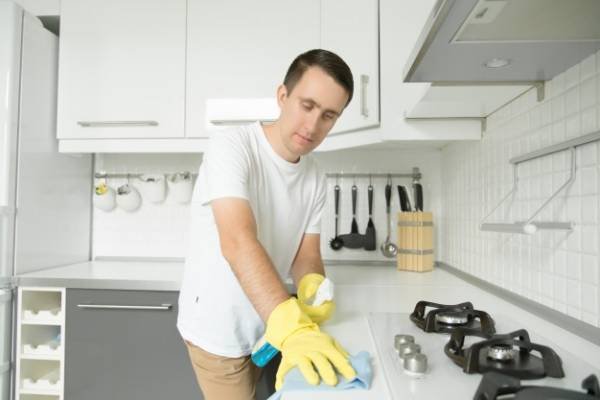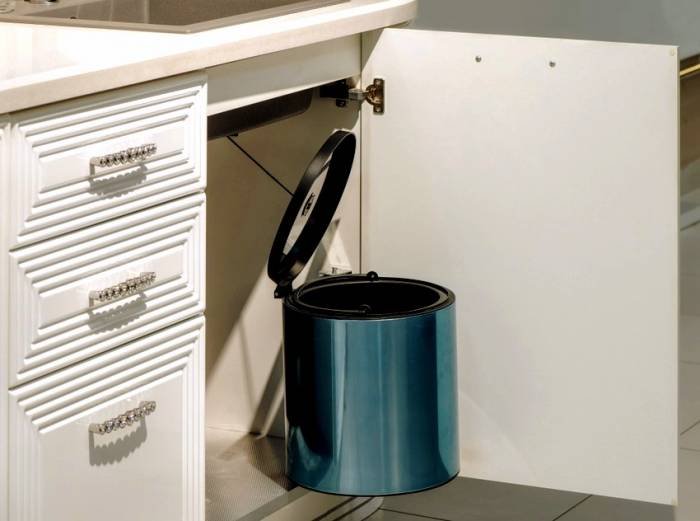26 Easy and Effective Methods forIndoor Air Pollution Solutions
Most people only experience air pollution outdoors, but studies show that many toxic substances found outdoors are just as prevalent indoors. Pollutants in cars, homes, or workplaces can significantly affect people’s health, especially if indoor air quality is not kept clean as recommended.
Examples of indoor air pollutants include sprays, furniture dust, scented candles, and dust mites. The good news is that indoor air pollution is manageable, provided that the indoor environment is clean and free of contaminants.
Given that indoor air pollution is typically quite high and we spend much of our time, including resting and sleeping, indoors, one of the best ways to combat the dangers of pollution is to maintain high indoor air quality. To enhance the air quality in your home, this section ofSelMagzintroduces 25 simple and effective methods.
1. If using hairspray or lacquer, ensure proper ventilation:
The use of shine products like polish,nail polishand hairspray should be done outdoors where there is good airflow. If performed indoors, it must be well-ventilated, as the volatile organic compounds can lead to issues like respiratory problems and cancer.
2. Ensure your stove is well-ventilated:
While cooking at home is essential, it is crucial to ensure your stove is well-ventilated to limit the production of carbon monoxide and hydrocarbons due to incomplete combustion. These gases are not healthy indoors and can pose serious long-term health risks.

3. Install a hood or exhaust fan in the kitchen and bathroom:
Moist air in kitchens and bathrooms encourages the growth of bacteria and mold. Mold spores are tiny particles that can enter the body and lead to serious illnesses, such ascolds,persistent coughs, and even fungal infections; installing a hood and exhaust fan helps reduce such mold growth.
4. Ensure the entire house, office, or car is adequately ventilated:
Proper ventilation guarantees a fresh airflow interior, while poor ventilation can significantly increase pollutant accumulation indoors.
5.Manage pests:
Keeping food stored away and sealing open entry points is important as it helps deter pests and insects, reducing the need for pesticides and other chemicals, thus improving indoor air quality by minimizing exposure to toxins from synthetic pest control products.
6. Ensure the chimney is open before using the fireplace:
This simply reduces the buildup of dust and smoke particles from the fireplace and also prevents the release of carbon monoxide caused by incomplete combustion.
7. Avoid masking odors with artificial fragrances:
Many people try to cover indoor smells with artificial fragrances, which often worsens the problem since these scents contain phthalates that can harm your health. Instead, identify the source of the odor and eliminate it, and clean the area with a homemade cleaner orbaking sodafor added freshness.
8.Avoid smoking indoors:
Smoking indoors leads to the accumulation of smoke and toxins, severely affecting indoor air quality. Smoke is associated with numerous cancers and other toxic factors detrimental to overall health.Quit smokingis the best solution as it ensures improved overall health. Smoking indoors or in a car should be completely banned.

9. Cleaning and dusting should be thorough:
Dust can carry bacteria, mold, pet dander, dust mites, and pollen. Thorough cleaning is highly recommended to improve indoor air quality as it eliminates these substances. Cleaning should utilize suitable dusting methods and cleaning agents.
10. Clean up spills:
Minimizing clutter helps manage dust accumulation that carries bacteria, mold, dust mites, and fungi, significantly reducing indoor air pollution from these sources.
11. If possible, minimize or remove rugs:
Rugs act as a refuge for tiny dust particles and allergens, increasing indoor air pollution. Dust particles from rugs are linked to chronic respiratory issues like asthma and persistent coughing. Removing rugs is a sure way to reduce indoor air pollution.
12. Make homemade cleaners:
Most commercially produced cleaners are filled with harmful environmental chemicals that may cause respiratory issues or asthma. Today, there are very simple processes to create homemade cleaners.
13. Minimize the use of air fresheners:
Many people enjoy fragrances, but these should come from pure essential oils that do not compromise indoor air quality. Artificial air fresheners circulate in indoor air and are linked to asthma andallergies. Choosing fragrance-free products can help reduce indoor air pollution at home.
14. Remove shoes at the entrance:
Shoes are said to bring over 50% of dust, disease, and outdoor chemicals into our homes. Therefore, taking shoes off at the door is one of the simplest ways to reduce indoor air pollution. Regularly cleaning and mopping with water is highly recommended.

15.Use a carbon monoxide detector:
Carbon monoxide can slowly suffocate a person, leading to death, and is produced from incomplete combustion due to poor ventilation of fireplaces and stoves. Using carbon monoxide detectors helps in reducing buildup and increasing indoor air pollution awareness.
16. Reduce the use of household chemicals:
Many household products such as cleaners, pesticides, paint, and detergents are loaded with chemicals. It becomes evident that these chemicals are heavily concentrated indoors, so the use of these products should be minimized and managed to limit indoor air pollution. Paying close attention to product labels can provide effective management strategies, but the best advice remains to choose natural products that contain fewer harmful substances.
17. Regularly test vehicle emissions:
Besides our homes and offices, people spend a lot of time in cars moving from one area to another. This necessitates maintaining a clean internal environment in the vehicle. One way to do this is to regularly test vehicle emissions to reduce indoor air pollution while driving.
18. Test for radon in your home:
Radon is a natural radioactive element formed by the decay of radium and is found in homes. Exposure to it poses serious health risks, causing growth problems in children and lowering IQ. Testing for radon is seen as a practical method to reduce indoor air pollution.
19. Fix water leaks:
Water leaks increase humidity and moist air indoors, thereby raising the level of indoor space for mold and fungus growth. Mold particles can enter the body, leading to serious illnesses like colds, persistent coughs, and even fungal infections. Fixing water leaks helps reduce mold and fungus.
20.Keep trash in a covered bin:
The aim of covering trash bags is to keep pests and insects away. This part of household management reduces the need for pesticides and other synthetic chemicals, thus lowering indoor air pollution by decreasing the release of toxins from waste products.

21. Open windows:
Opening windows is the simplest and easiest way to reduce indoor air pollution. If the outdoor environment is clear of runoff, smoke, volatile compounds, or dust, it allows for fresh air circulation, reducing indoor air pollution.
22. Wash bedding weekly in hot water:
Dust particles, toxins, and pet food often accumulate over time on bedding. Since these particles are so small, they can linger in the air and be inhaled without any awareness easily. Weekly washing bedding in hot water is the best way to eliminate them and improve indoor air quality.
23. Avoid commercial scented candles:
Commercial candles cause indoor air pollution as most of them contain paraffin wax, which releases toluene and benzene—both carcinogenic—when burned. Additionally, the wicks of scented candles often contain lead. Scented candles also contain artificial fragrances.
24. Use advanced filters:
Millions of tiny dust particles and smoke particles can be released, as well as carbon monoxide, if ventilation is poor due to incomplete combustion. Therefore, using advanced filters will help reduce indoor air pollution compared to traditional methods designed to remove 99.97% of airborne particles.
25. Choose the right air purifier:
There are many air purifiers available, but selecting a good one is key to improving indoor air quality. The best air purifiers thoroughly eliminate nearly 99% of airborne particles.
26. Planting indoor plants naturally purifies the air:
Plants amazing clean toxins from inside the home, in addition to being aesthetically pleasing. Plants also do not create noise while purifying indoor air from toxins.







